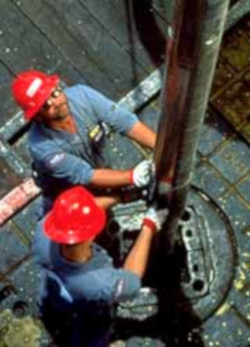Head and Face Protection
Protective hardhats for head protection against impact blows should be able to withstand penetration and absorb the shock of a blow. In some cases hardhats should also protect against electric shock. Recognized standards for hardhats have been established by the American National Standards Institute (ANSI).

- ANSI Type I is the most common hardhat used. They are intended to reduce the force of impact resulting from a blow only to the top of the head.
- ANSI Type II Hard Hats also reduce the force of lateral impact resulting from a blow which may be received off-center, from the side, or to the top of the head. This form of impact, for example, may result from contact with the sharp corner of a side beam.
Hard hats are often good for only three to five years after put into service because they can become brittle due to wear and tear and sun exposure. Hard hats should be replaced as soon as it cracks, breaks, fades, or is damaged. When in doubt, replace it. Be aware of the following best practices:
- Metal hard hats and bump caps are prohibited.
- Hard hats are not to be worn tipped forward, backward or to one side.
- The suspension system should be adjusted to the proper size to provide sufficient clearance between the shell and the headband. It should not be modified or altered in any way.
Head and facial hair should not interfere with normal work activities or respiratory protection equipment (RPE).
Workers with long hair that may create a hazard from being snagged should be required to keep it contained in an appropriate manner.
Knowledge Check Choose the best answer for the question.
3-4. What part of a worker's head does an ANSI Type I protect?
You forgot to answer the question!
